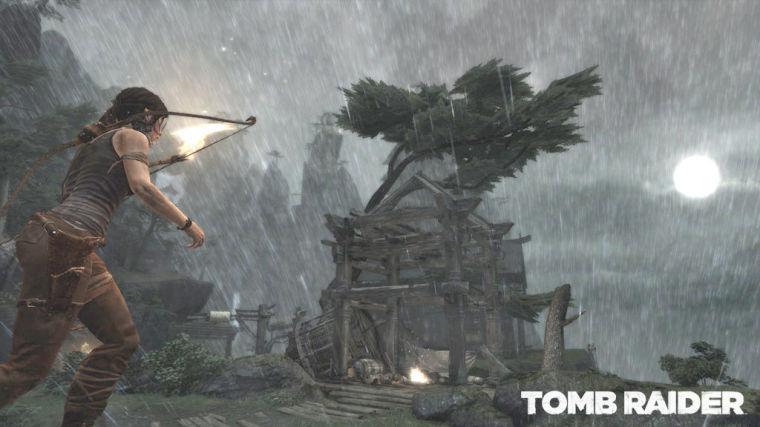
Photo Courtesy of Crystal Dynamics
Tomb Raider Review
4 out of 5 stars
With Tomb Raider, the gaming world has been introduced to a brand new Lara Croft. The franchise reboot goes back to the beginning and shows a young Lara without the combat skills, twin pistols or quick wit she has become known for in the past 17 years.
Frankly, it’s about time. Though known as a legendary gaming character, the original Lara Croft had two things stacked against her. First, she was frequently seen as more of a sex symbol than a fully developed character and second, she hadn’t starred in a great game in more than a decade.
The new Tomb Raider addresses both. While not without its issues, this reboot not only manages to reinvent Lara Croft as a scarred and hardened survivor, it does so while providing one of the most fun action adventure games of this generation.
At the start of the game, though, neither of these things is immediately apparent. As part of an archaeological expedition seeking the lost Japanese kingdom of Yamatai, Lara’s research leads the team’s boat into a treacherous storm that causes a shipwreck and leaves the crew stranded.
Before long, the island’s native inhabitants begin to hunt Lara and her fellow survivors down. In order to save her friends and find out more about the mysterious storms that surround the island, Lara must face the elements and turn from a terrified young girl into a hardened warrior.
The story in Tomb Raider is successful when it focuses on Lara’s evolution, but it never manages to build anything else up. The supporting cast is made up of stereotypical characters and the villains are never really fleshed out well. The history of the island is fun to learn about, but things are best when squarely focused on Lara.
Early on, Lara’s vulnerabilities make up a majority of the gameplay. Instead of facing off against legions of enemies, players will have to deal with debilitating wounds, hunting down wildlife and finding the tools to survive.
The early parts of the game are some of Tomb Raider’s strongest, immediately setting up the grim, desperate tone that carries through the entire narrative. These moments serve to connect the player not only to Lara’s struggles, but to her as a character. The strong vocal and motion capture performance by Camilla Luddington only helps, making it easy to empathize with Lara.
Unfortunately, the game does take a hit once the action begins to pick up. Though the first time Lara has to kill someone is shown to devastate her as a character, it’s only a few seconds later that she begins to take out entire squads of men in open combat. There’s simply a bit of a disconnection between where Lara is in her own journey and the gameplay itself.
Still, the gameplay sections are a lot of fun, standing alongside genre classics such as Uncharted and Gears of War. Lara’s combat capabilities become more varied as her arsenal grows, and the ability to develop her skills as the player sees fit adds to the sense that Lara is becoming more battle-hardened over the 15 to 20-hour campaign.
Tomb Raider also benefits from a semi-open world that can be explored for a wide number of collectibles, including documents from throughout the island’s history and salvage that provides the raw materials needed to further upgrade Lara. Though some of the hidden challenges can be a bit annoying to complete, they’re entirely optional and aren’t necessary to fully enjoy the game’s story.
Tomb Raider won’t be remembered as a revolutionary title or as one of the generation’s best. However, it’s successful in what it does for Lara Croft. It’s a fun action game that brings a new level of depth and humanity to one of gaming’s leading ladies.